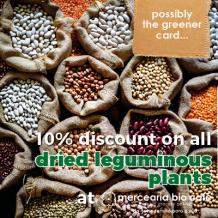Kefir

Kefir is a fermented beverage originary from the Caucasus Mountains, where it has been consumed for thousands of years, not only for its nutritional properties but also traditionally believed to confer longevity. It is obtained by temporary submersion of "kefir grains" on a substrate, such as milk, whether it is of cow, goat or ewe's milk, where the fermentation takes place.
It is also known by the designation of tibia, yogurt flower, yogurt mushrooms, quefir, kiaphur, kefer, knapon, kepiand and kippi. The term kefir, derives from the Turkish keif that means "well-being" or "well to live".
The "kefir grains" are a colony of symbiotic microorganisms, immersed in a matrix composed of polysaccharides and proteins, formed by bacteria - lactobacilli and bifidobacteria - and may contain yeasts. However, their biological, chemical and nutritional composition varies according to origin and mode of production.
It is considered a probiotic food, with creamy consistency and slightly bitter taste, which results from the fermentation of milk, but everything will depend on the time of this fermentation. It is obtained by adding "kefir grains" to the milk, which will ferment it, incorporating into its constitution beneficial bacteria and yeasts, as well as other nutrients useful for health.
It is very rich nutritionally, when compared to the yogurt, since it has a greater number of bacteria and yeasts, resulting from the fermentation process, of which the following stand out: L. bulgaricus, S. thermophilus, L. acidophilus, L. casei, among many others, bifidobacteria and yeasts.
There are several studies that indicate that kefir brings immense benefits to health, which stands out in the balance of the intestinal microbiota, in the regulation of blood pressure, in the improvement of cardiovascular diseases and weight loss.
How to grow kefir:
Usually "kefir grains" are donated and improper transportation can result in undue contamination. The production is homemade by placing about 2 tablespoons of the beans in a sterile flask and then blanching with milk at room temperature (20-28 ° C). The bottle should be capped with a cloth so that the beans "breathe". Bacteria begin to feed from milk sugar (fermentation). If they are placed in the refrigerator, this process is inactivated, leaving the bacteria dormant, being able to resist for weeks or months. They can also be frozen and reactive after years.
When receiving the beans, it is important to check that the color and texture are similar to those presented at the time they were sent. Usually they have a variable size of 0.3 - 3 cm, with irregular shape, of yellowish white color, and viscous and firm texture.
During the fermentation process it is normal for the grain to grow, since the bacteria are feeding. If they stay small after a few days, it's a sign that something is wrong.
In addition to the cultures of milk kefir, water kefir also exists, in which sugars and / or fruit are added to fermentation. The grains are formed by a consistent and gelatinous mass, translucent yellow in color and of irregular shape and variable size.

Highlights
green card - dried leguminous plants
For the Mercearia Bio Green Card hol...
Read article
find out more
about your order
282 476 686© mercearia bio 2024, all rights reserved



